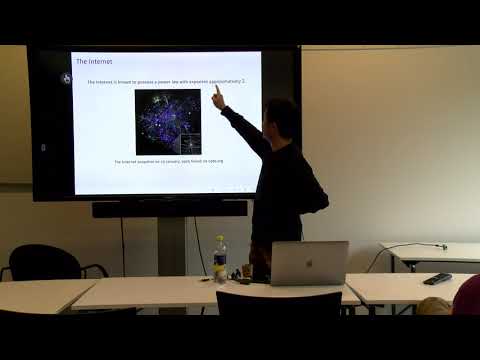Title: Maximum likelihood estimation of Sublinear Preferential Attachment Models and its connection to urn models
Abstract:
The preferential attachment (PA) network is a popular way of modeling the social networks, the collaboration networks and etc. The PA network model is an evolving network model where new nodes keep coming in. When a new node comes in, it establishes only one connection with an existing node. The random choice on the existing node is via a multinomial distribution with probability weights based on a preferential function f on the degrees. f maps the natural numbers to the positive real line and is assumed apriori non-decreasing, which means the nodes with high degrees are more likely to get new connections, i.e. "the rich get richer". Under sublinear parametric assumptions on the PA function, we proposed the maximum likelihood estimator on f. We show that the MLE yields optimal performance with the asymptotic normality results. Despite the optimal property of the MLE, it depends on the history of the network evolution, which is often difficult to obtain in practice. To avoid such shortcomings of the MLE, we propose the quasi maximum likelihood estimator (QMLE), a history-free remedy of the MLE. To prove the asymptotic normailty of the QMLE, a connection between the PA model and Svante Janson's urn models is exploited.
This is (partially) joint work with Aad van der Vaart.

